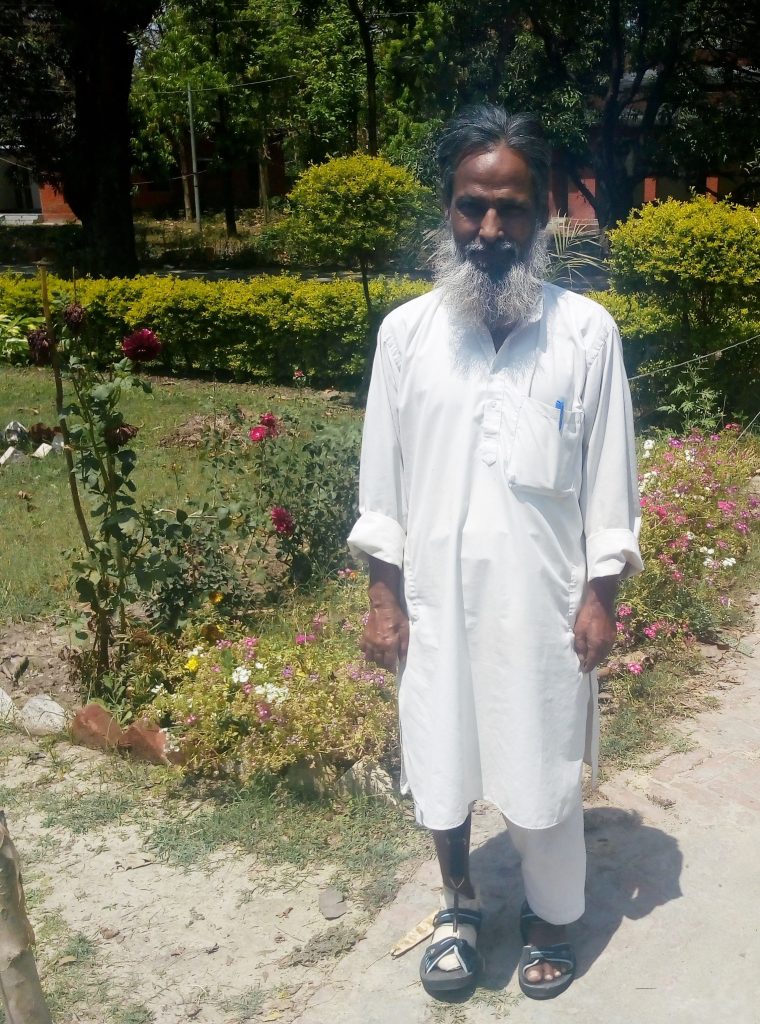A (foot) drop of hope

– By Dr Amrita Daniel, Orthopaedic Surgeon, TLM Faizabad Hospital
While Chand Ali was seated on the revolving stool near me in my consulting room, I was trying to understand what was going through his mind. A wide variety of emotions flashed across his weathered face. It seemed his eyelids were so weighed down by grief he could not lift his eyes to look at me even when I asked him what brought him to the hospital.
When Ali started talking, the impression I got was, he was struggling to gather the courage to overcome the sorrow that enveloped him. At last, he succeeded in narrating his story – but punctuated by long silences.
61-year-old Ali who belongs to Mawai village in Gonda district of Uttar Pradesh has a small business installing PVC floor carpets (vinyl flooring) in residential and commercial buildings. He has four children, and two of them live with him. In 2003, when he was 46, Ali found out he could not lift his left foot off the ground while walking (foot drop), and there was a loss of sensation in the foot. He did not take it seriously and life went on with Ali excelling in his business. It was only in 2009 when he was 52 that Ali was diagnosed with leprosy. He was cured after taking MDT (multidrug therapy) for a year from the Primary Health Centre (PHC) in his village. The PHC doctor told him that because his leprosy was not diagnosed and treated in time, he developed foot drop (foot drop is a general term that describes a difficulty in lifting the front part of the foot, often caused by compression of a nerve. Foot drop is one of the complications of leprosy. It can be prevented by timely diagnosis and treatment of leprosy).
By the time Ali came to me, he had lost all his toes, and there was a large, pus-filled ulcer over the front of his foot, with exposed, damaged bone, and the bacteria from the open wound had spread to his blood. Noticing he had no toes, I asked him how many surgeries he had undergone. “None”, he replied. “My toes just kept getting ulcerated, then infected. After two months, they became discoloured and fell off. There was no pain, so I carried on. Because of the ulcer, I can’t stand for a long time, and my business suffered. I’m broken now” he added.
Ali’s condition required immediate intervention and so we admitted him and performed surgery for his infected ulcer and forefoot bones. We provided him with a pair of MCR (micro-cellular rubber) footwear to protect his feet from further damage. Also, we fitted him with a special spring orthosis – a device that pulls the foot up while walking so it will not trail on the floor. He was taught self-care practices, and precautions he should take at home and while doing work to prevent further damage to his foot.
At last, it was time for Ali’s discharge from the hospital. I could see the cloud of sorrow lifted from his face. “I’d lost hope when I came here,” he said. “My stay in the hospital was a life-changing experience. My wounds are healed and I’ve learnt how to take care of my foot from further damage. Now I can walk properly and I’m confident I can become successful again in my work. I’m touched by the love and care of the hospital staff who took good care of me,” he added, looking off into the distance with moist eyes.


